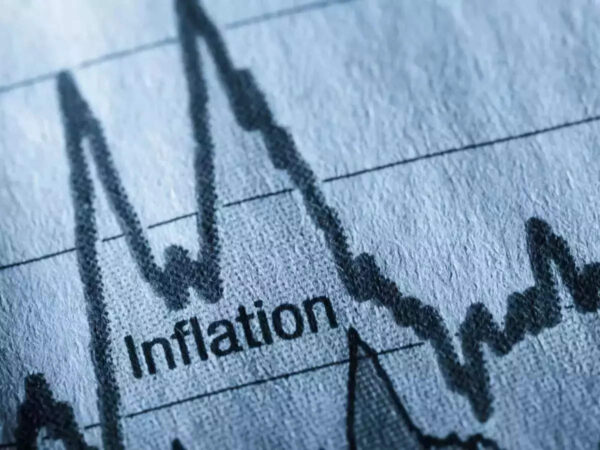rajkotupdates.news : us inflation jumped 7.5 in in 40 years
6 min read
rajkotupdates.news : us inflation jumped 7.5 in in 40 years
Inflation, an increase in the general price level of goods and services in an economy over time, is a crucial economic indicator that affects individuals, businesses, and governments. Recently, there has been a concerning development in the United States, where according to news on rajkotupdates.news : us inflation jumped 7.5 in in 40 years. This significant jump in inflation poses challenges for the nation’s economy, impacting various sectors and potentially altering the financial landscape for years to come.
Also Read: windows-11 rajkotupdates.news
Understanding Inflation
Inflation is typically measured by tracking the changes in the Consumer Price Index (CPI), which reflects the average price level of a basket of goods and services consumed by households. A steady and moderate level of inflation is generally considered healthy for an economy, promoting economic growth and stability. However, when inflation rises at an accelerated rate, it can have adverse effects, eroding purchasing power and distorting economic decision-making.
The Jump in US Inflation
According to recent data reported by rajkotupdates.news, the United States has experienced a notable increase in inflation, with prices rising by 7.5% over a 40-year period. This surge is a cause for concern as it exceeds the historical average and indicates a departure from the relatively stable inflation rates seen in previous decades.
Factors Contributing to the Jump
Several factors have contributed to the acceleration of inflation in the United States. One significant factor is the expansionary monetary policies implemented by the Federal Reserve in response to the economic shocks caused by the COVID-19 pandemic. These policies, including low interest rates and large-scale asset purchases, were intended to stimulate economic growth and prevent a severe recession. However, they have also fueled inflationary pressures by increasing the money supply and boosting consumer demand.
Additionally, supply chain disruptions and increased production costs have added to the inflationary pressures. The pandemic-related disruptions in global trade, shortages of raw materials, and rising transportation costs have led to higher prices for goods and services. These supply-side challenges have compounded the impact of expansive monetary policies, exacerbating inflationary pressures in the economy.
Implications for Individuals and Businesses
The surge in inflation has tangible implications for individuals and businesses across the United States. Higher inflation erodes the purchasing power of consumers, reducing their ability to afford goods and services. Essential items, such as food, housing, and healthcare, become more expensive, putting a strain on household budgets.
For businesses, rising inflation presents a dual challenge. On one hand, they face higher input costs, including raw materials, labor, and transportation. These increased costs can squeeze profit margins and limit the ability to expand or invest in new ventures. On the other hand, businesses may find it difficult to pass on these increased costs to consumers fully, leading to a decline in profitability.
Government Response and Future Outlook
Recognizing the seriousness of the situation, the US government and the Federal Reserve have taken steps to address the inflationary pressures. The Federal Reserve has started to taper its monetary stimulus programs gradually, signaling a shift towards a more restrictive monetary policy. Additionally, policymakers are closely monitoring the economy and inflation metrics to determine the appropriate course of action.
The future trajectory of inflation remains uncertain. While some experts believe that the current surge is transitory and will eventually subside as supply chains stabilize and demand normalizes, others express concerns that it could become entrenched and lead to a sustained period of higher inflation.
Conclusion
The significant jump in US inflation, as reported by rajkotupdates.news, presents a worrisome economic trend. The combination of expansionary monetary policies, supply chain disruptions, and increased production costs has led to a notable increase in the general price level of goods and services. This surge in inflation poses challenges for individuals, businesses, and policymakers alike, as they grapple with the implications and strive to maintain economic stability. Monitoring inflation closely and implementing appropriate policy measures will be crucial to steer the US economy towards a more sustainable path in the coming years.
FAQ: US Inflation Jumped 7.5% in 40 Years
Q1: What is the meaning of inflation?
A1: Inflation refers to the increase in the general price level of goods and services in an economy over time. It erodes the purchasing power of currency, as it takes more money to buy the same goods and services.
Q2: How is inflation measured?
A2: Inflation is typically measured using the Consumer Price Index (CPI), which tracks the average price level of a basket of goods and services consumed by households. Changes in the CPI are used to determine the rate of inflation.
Q3: What does it mean when it is said that US inflation jumped 7.5% in 40 years?
A3: This statement implies that the general price level in the United States increased by 7.5% over a span of 40 years. It suggests a significant rise in inflation compared to historical averages and indicates a departure from the relatively stable inflation rates experienced in previous decades.
Q4: What factors contributed to this jump in US inflation?
A4: Several factors contributed to the increase in US inflation. Expansionary monetary policies implemented by the Federal Reserve in response to the COVID-19 pandemic, supply chain disruptions, and increased production costs have all played a role in driving up prices.
Q5: How did expansionary monetary policies affect inflation?
A5: The expansionary monetary policies, such as low interest rates and large-scale asset purchases, aimed to stimulate economic growth during the pandemic. However, these policies also increased the money supply and boosted consumer demand, leading to inflationary pressures.
Q6: What are the implications of higher inflation for individuals?
A6: Higher inflation erodes the purchasing power of individuals, as it increases the cost of goods and services. This means that essential items, such as food, housing, and healthcare, become more expensive, potentially straining household budgets.
Q7: How does higher inflation impact businesses?
A7: Businesses face challenges due to higher inflation. They experience increased input costs, including raw materials, labor, and transportation, which can squeeze profit margins. Moreover, businesses may struggle to pass on these increased costs to consumers fully, leading to decreased profitability.
Q8: What is the government doing to address inflation?
A8: The US government and the Federal Reserve are taking steps to address inflationary pressures. The Federal Reserve has started tapering its monetary stimulus programs gradually, signaling a shift towards a more restrictive monetary policy. Policymakers are closely monitoring the economy and inflation metrics to determine the appropriate course of action.
Q9: Is this surge in inflation expected to be temporary?
A9: The future trajectory of inflation is uncertain. Some experts believe that the current surge is transitory and will eventually subside as supply chains stabilize and demand normalizes. However, there are concerns that it could become entrenched and lead to a sustained period of higher inflation.
Q10: How can individuals and businesses prepare for higher inflation?
A10: Individuals and businesses can take several steps to mitigate the impact of higher inflation. This includes budgeting, saving, diversifying investments, and exploring ways to reduce costs and improve efficiency. Consulting with financial advisors or experts can also provide guidance on navigating inflationary environments.
Please note that the information provided in this FAQ is based on the reported news about US inflation jumping 7.5% in 40 years.






